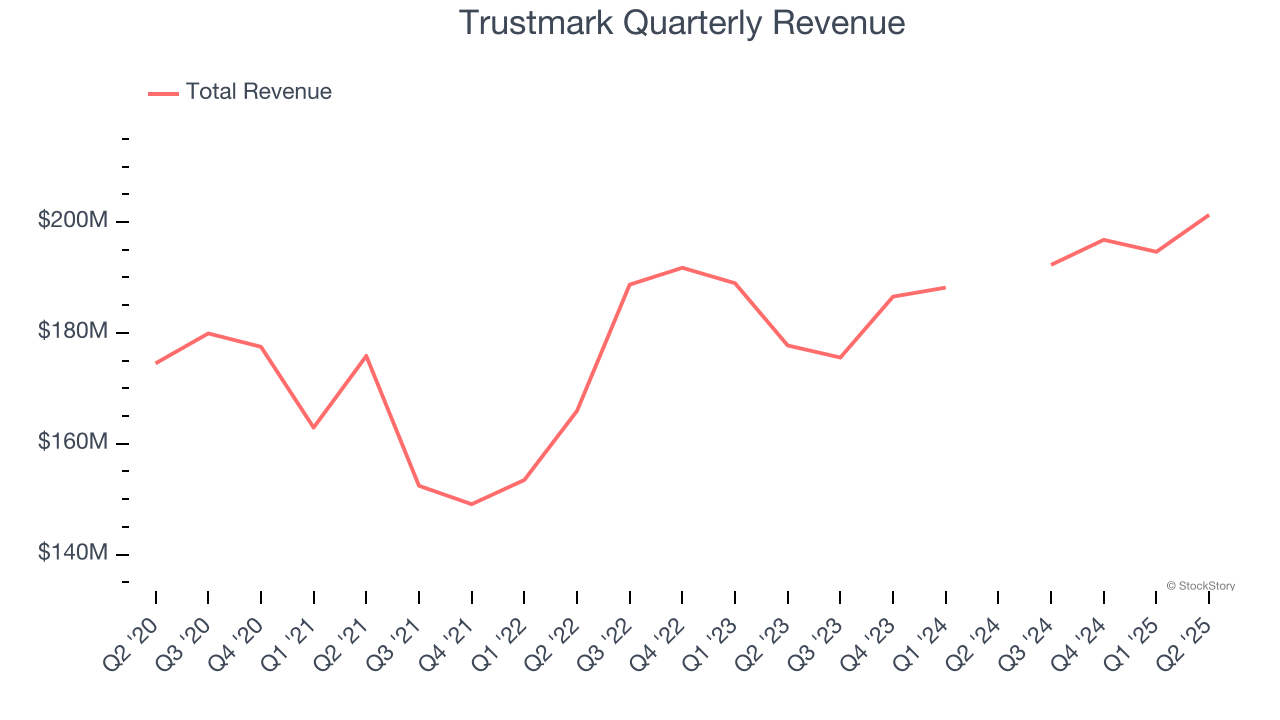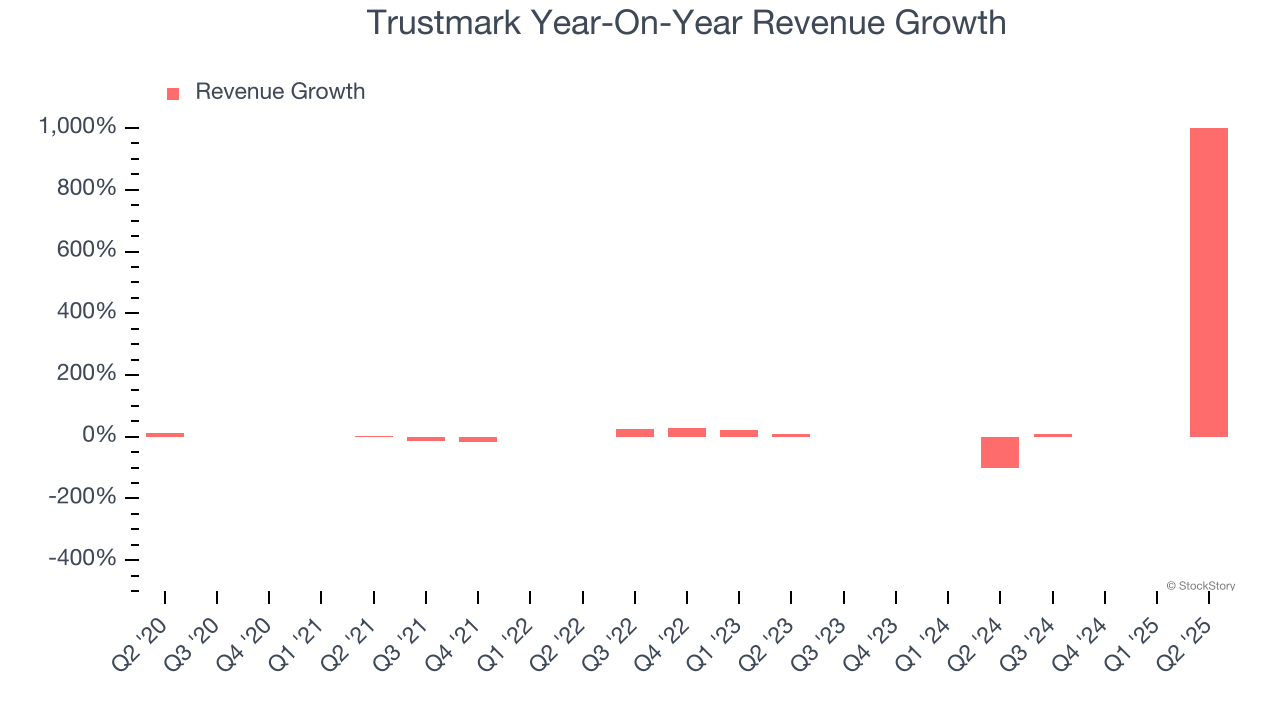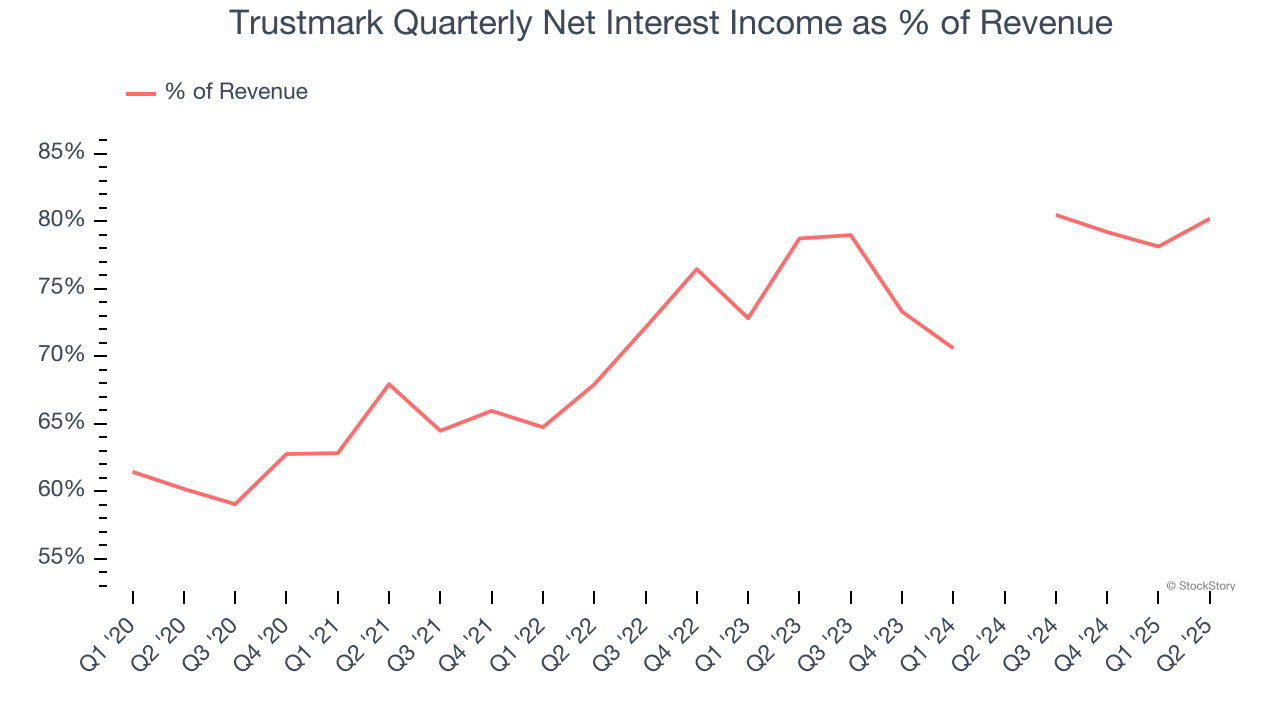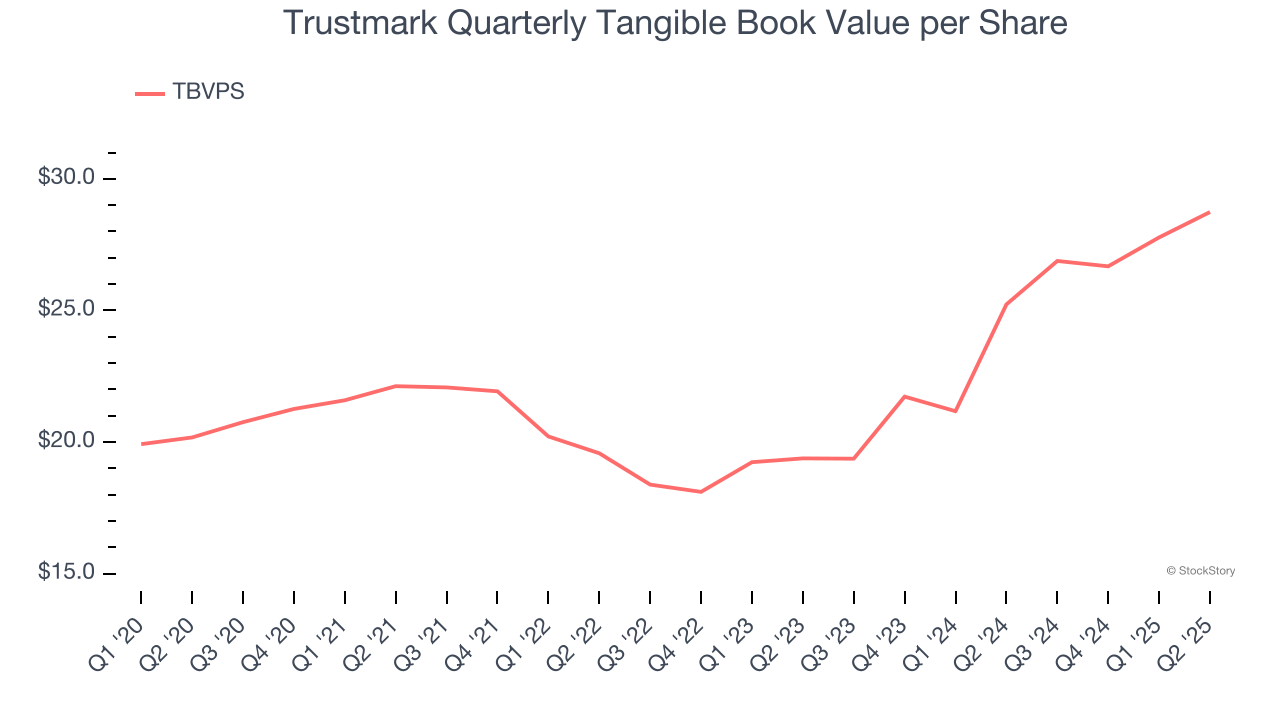
Regional banking company Trustmark (NASDAQ:TRMK) reported Q2 CY2025 results topping the market’s revenue expectations, with sales up 78,426% year on year to $201.3 million. Its non-GAAP profit of $0.92 per share was 6% above analysts’ consensus estimates.
Is now the time to buy Trustmark? Find out by accessing our full research report, it’s free.
Trustmark (TRMK) Q2 CY2025 Highlights:
- Net Interest Income: $161.4 million vs analyst estimates of $158.6 million (14.5% year-on-year growth, 1.8% beat)
- Net Interest Margin: 3.8% vs analyst estimates of 3.8% (43 basis point year-on-year increase, 3.6 bps beat)
- Revenue: $201.3 million vs analyst estimates of $197.8 million (1.8% beat)
- Efficiency Ratio: 61.2% vs analyst estimates of 63% (1.8 percentage point beat)
- Adjusted EPS: $0.92 vs analyst estimates of $0.87 (6% beat)
- Market Capitalization: $2.33 billion
Duane A. Dewey, President and CEO, stated, “Our momentum continues to build as reflected in our solid financial performance in the second quarter of 2025. Diversified loan growth and solid credit quality continued. We were also successful in building and expanding attractive, cost-effective core deposit relationships. Our mortgage banking and wealth management businesses also performed well. These accomplishments are the results of our focused efforts to expand customer relationships and diligently manage expenses. Our associates have done a tremendous job of serving customers, building relationships, and demonstrating the value Trustmark can provide as their financial partner. We are well-positioned to create long-term value for our shareholders.”
Company Overview
Tracing its roots back to 1889 in Mississippi, Trustmark (NASDAQ:TRMK) is a financial services organization providing banking, wealth management, insurance, and mortgage services across five southeastern states.
Sales Growth
In general, banks make money from two primary sources. The first is net interest income, which is interest earned on loans, mortgages, and investments in securities minus interest paid out on deposits. The second source is non-interest income, which can come from bank account, credit card, wealth management, investing banking, and trading fees.
Unfortunately, Trustmark’s 3.7% annualized revenue growth over the last five years was mediocre. This wasn’t a great result compared to the rest of the bank sector, but there are still things to like about Trustmark.

Note: Quarters not shown were determined to be outliers, impacted by outsized investment gains/losses that are not indicative of the recurring fundamentals of the business.We at StockStory place the most emphasis on long-term growth, but within financials, a half-decade historical view may miss recent interest rate changes, market returns, and industry trends. Trustmark’s recent performance shows its demand has slowed as its annualized revenue growth of 2.5% over the last two years was below its five-year trend.

Note: Quarters not shown were determined to be outliers, impacted by outsized investment gains/losses that are not indicative of the recurring fundamentals of the business.
This quarter, Trustmark reported $201.3 million of revenue, beating Wall Street’s estimates by 1.8%.
Net interest income accounted for more than half of the company’s total revenue over the last five years. Net interest income is critical to analyze for banks because it's considered a higher-quality, more recurring revenue source by investors.

Note: Quarters not shown were determined to be outliers, impacted by outsized investment gains/losses that are not indicative of the recurring fundamentals of the business.
Today’s young investors won’t have read the timeless lessons in Gorilla Game: Picking Winners In High Technology because it was written more than 20 years ago when Microsoft and Apple were first establishing their supremacy. But if we apply the same principles, then enterprise software stocks leveraging their own generative AI capabilities may well be the Gorillas of the future. So, in that spirit, we are excited to present our Special Free Report on a profitable, fast-growing enterprise software stock that is already riding the automation wave and looking to catch the generative AI next.
Tangible Book Value Per Share (TBVPS)
Banks are balance sheet-driven businesses because they generate earnings primarily through borrowing and lending. They’re also valued based on their balance sheet strength and ability to compound book value (another name for shareholders’ equity) over time.
Because of this, tangible book value per share (TBVPS) emerges as the critical performance benchmark. By excluding intangible assets with uncertain liquidation values, this metric captures real, liquid net worth per share. Other (and more commonly known) per-share metrics like EPS can sometimes be murky due to M&A or accounting rules allowing for loan losses to be spread out.
Trustmark’s TBVPS grew at an impressive 7.3% annual clip over the last five years. TBVPS growth has also accelerated recently, growing by 21.8% annually over the last two years from $19.38 to $28.74 per share.

Over the next 12 months, Consensus estimates call for Trustmark’s TBVPS to grow by 7.8% to $30.99, decent growth rate.
Key Takeaways from Trustmark’s Q2 Results
It was encouraging to see Trustmark beat analysts’ expectations across the board this quarter. Overall, this print had some key positives. The stock remained flat at $38.72 immediately after reporting.
Sure, Trustmark had a solid quarter, but if we look at the bigger picture, is this stock a buy? When making that decision, it’s important to consider its valuation, business qualities, as well as what has happened in the latest quarter. We cover that in our actionable full research report which you can read here, it’s free.
